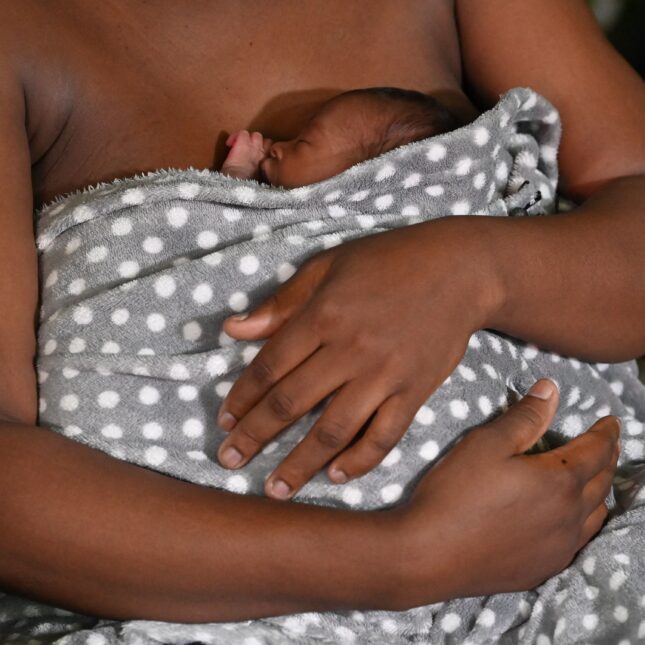
More than one in 10 infants worldwide are born preterm, many with complications: Nearly 1 million die each year. This is the single largest cause of death in children around the world before their fifth birthday.
As a pediatrician, I see these lost lives as unacceptable and, in many cases, preventable. It’s particularly heartbreaking when the sick newborn is isolated, for example in specialized neonatal intensive care units not designed with space for families to be present or for fear of infectious disease as commonly occurred during the Covid-19 pandemic — where they can’t be held and otherwise experience love from parents and other family members.
Thankfully, in recent years, we’ve learned a great deal about measures that can, collectively, prevent nearly three-fourths of newborn deaths. Key among them is centering mothers and families in the care of their preterm infants.
In November 2022, a World Health Organization Guideline Development Group, of which I was co-chair, released new recommendations for care of preterm or low birth weight (less than 2,500 grams) infants in all settings. In August 2023, we also published a paper in eClinicalMedicine explaining the new recommendations, along with a new research agenda for advancing this care. I believe our vision presents a dramatic shift in how maternal-newborn care is provided. We envision a model of care where mothers, newborns, other parents, and families form an inseparable center around which the entire maternal-newborn service delivery is organized, with close collaboration between health care providers.
The WHO recommendations include some specific new techniques for all preterm or low birth weight infants such as exclusive breastfeeding for six months, the use of caffeine for treatment of episodes of apnea (in which the infant stops breathing for more than 20 seconds), and use of CPAP (continuous positive airway pressure) for treatment of infants with respiratory distress. Others are recommended depending on the context, such as use of emollient therapy with sunflower seed oil or coconut oil to improve skin barrier function and protect from loss of heat and from infection, and use of probiotics to shape a healthy gut microbiome.
But perhaps the most powerful change we can make to save the lives of preterm infants is to empower mothers and families to provide what’s known as kangaroo mother care. This idea runs counter to many contemporary practices, in which preterm babies are often separated from their parents while receiving high-tech, intensive care.
We now have strong evidence that the mother’s ability to provide skin-to-skin contact and breastfeeding through kangaroo mother care can regulate temperature and breathing, ward off infection, promote breastfeeding and growth, and keep preterm infants alive more effectively than current high-tech strategies. Making prolonged kangaroo mother care (more than eight hours per day) part of routine care for small or sick newborns can prevent up to about half of preterm baby deaths by 2025, a Lancet study estimates. Kangaroo mother care also has many benefits for the mother, reducing her risk for hemorrhage after childbirth, promoting bonding with her infant, and improving her mental health by reducing depression and anxiety. The father/partner, other family members, and surrogates can also provide skin-to-skin contact.
In May, the WHO released a position paper and implementation strategy to enable the expansion of kangaroo mother care around the world. These documents build on the WHO recommendations for kangaroo mother care as the standard of care for preterm and low birth weight babies. WHO also recommends beginning kangaroo mother care immediately after birth, rather than waiting until the infant is stabilized: Immediate kangaroo mother care after birth has been found to increase a low birth weight infant’s chance of survival by 25 percent.
These recommendations have important ramifications for health programming because mothers and newborns must remain together at all times. But making these recommendations a reality will require all the WHO health system building blocks, including a skilled workforce, infrastructure, commodities, financing, monitoring, governance, and government commitment.
Keeping the mother and baby together continuously after childbirth will require changes in infrastructure, for example accommodating the mother and meeting her needs within special newborn care nurseries, health care provider education, teamwork among maternal and newborn care providers, and adapted protocols for integrated care. Additional research is also needed, such as on strategies to increase family participation in the care of their preterm or low birth weight infants in intensive and special care units, and in settings without dedicated newborn units. We also need to know more about the effectiveness of immediate kangaroo mother care from birth for critically ill preterm or low birth weight infants. This includes infants who are mechanically ventilated for respiratory failure or on vasopressor support for management of low blood pressure.
These building blocks to center families and keep mothers and newborns together will require significant shifts and investments. However, the potential benefits are even greater: improved infant survival and health, the well-being of families, and the contributions all of these babies can make to the world in the future.
Gary Darmstadt is associate dean for maternal and child health, and professor of neonatal and developmental medicine in the Department of Pediatrics at the Stanford University School of Medicine.










Exciting news! STAT has moved its comment section to our subscriber-only app, STAT+ Connect. Subscribe to STAT+ today to join the conversation or join us on Twitter, Facebook, LinkedIn, and Threads. Let's stay connected!
To submit a correction request, please visit our Contact Us page.